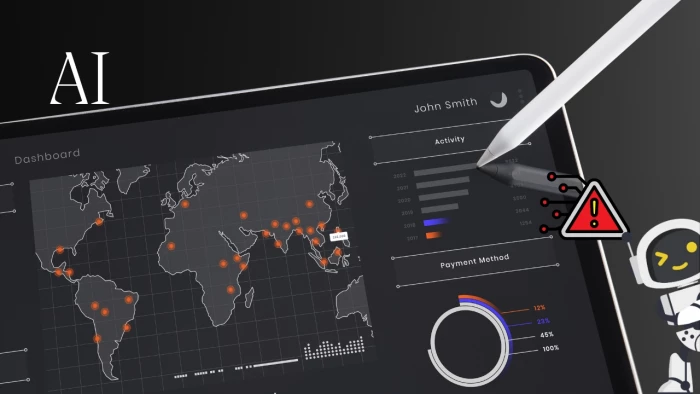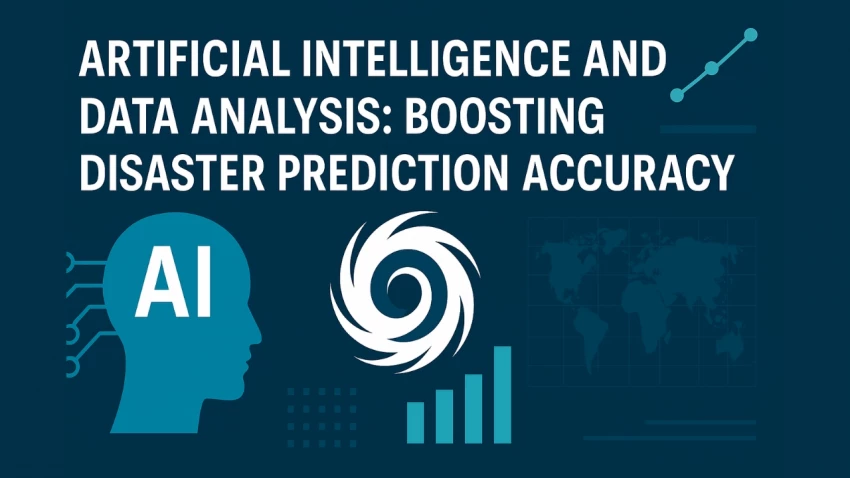

Natural disasters are unpredictable, but technology is helping us prepare better than ever. Artificial intelligence (AI) is revolutionising weather prediction, transforming how we forecast disasters, respond to emergencies, and save lives.
But what is the role of AI in predicting disasters? And how exactly can AI help advance disaster risk knowledge and crisis management? Let’s explore how AI is transforming our understanding and response to natural disasters.
Every year, natural disasters affect millions of people worldwide. Weather-related disasters have increased fivefold in the past 50 years, causing over 2 million deaths and $3.64 trillion in economic losses.
Traditional forecasting systems provide useful data, but they often struggle with the accuracy of storm paths, rainfall intensity, and timing. Artificial intelligence and data analysis enhance predictive accuracy by identifying hidden patterns in large datasets that conventional models and humans often overlook.
By analyzing vast datasets like satellite imagery, historical weather records, and sensor readings, AI is enhancing early warning systems for storms and other natural hazards. This means communities can receive more precise alerts about hurricanes, floods, and typhoons, giving them crucial time to prepare.
So, how can governments and organizations use AI in disaster management? AI plays a crucial role in every stage of the disaster cycle:
In short, AI is transforming disaster response and preparedness into a data-driven, proactive process instead of reactive emergency management.
One of AI’s most impactful roles is storm prediction. AI-powered systems are now used worldwide to forecast hurricanes, typhoons, and floods more accurately.
Japan is also a global leader in disaster management, using AI-driven systems to predict storms and earthquakes with exceptional accuracy. Researchers at RIKEN and Kyushu University have developed AI models that forecast typhoon paths 30% more accurately than traditional methods, while the country’s Earthquake Early Warning (EEW) system processes seismic data within seconds to issue geo-targeted alerts to at-risk regions. This combination of AI, supercomputers, and real-time satellite data enables authorities to stop bullet trains, shut down power plants, and give citizens critical seconds to evacuate or take cover. By enhancing early warning systems for storms and earthquakes, Japan shows how artificial intelligence and data analysis can transform disaster response and save countless lives.
In the United States, AI is increasingly used to predict and manage wildfires, which are growing more frequent due to climate change. The U.S. Forest Service works with NASA and private companies to analyze satellite imagery, wind patterns, and vegetation data with AI models, allowing firefighters to predict fire spread and allocate resources more effectively. Meanwhile, Bangladesh has adopted AI-powered flood forecasting systems, developed in partnership with Google, that deliver early warnings to millions of residents through geo-targeted alerts on mobile phones. These systems have already proven lifesaving, reducing casualties during severe monsoon seasons and showing how AI in disaster management plays a crucial role in efficiently managing resources worldwide.
How does the prediction of natural calamities help save lives? The answer is time. More accurate warnings mean faster evacuations, better medical preparation, and more efficient deployment of rescue teams.

Predicting storms is critical, but AI in crisis management becomes most valuable during and after disasters. Here’s how it’s applied:
This shows how AI is transforming disaster response from slow and manual to fast, data-driven, and life-saving.
AI doesn’t just help during emergencies; it strengthens long-term resilience. By analyzing large datasets, AI can:
The European Space Agency’s AI4EO program is a great example, using AI to monitor risks across Europe and guide policymakers in adapting to climate change.
This shift from emergency recovery to proactive planning ensures societies are better prepared for the disasters of tomorrow.
While AI can forecast disasters and save lives, challenges remain:
Still, the potential is undeniable. As AI technology advances, it can help advance disaster risk knowledge, making predictions more equitable and actionable worldwide.
Looking ahead, several trends will define AI’s role in disaster management:
AI in disaster management is no longer a futuristic vision. It’s happening now; forecasting disasters, saving lives, and reshaping how humanity adapts to an increasingly volatile climate.
So, what is the role of AI in predicting disasters? It’s simple: to give us the power of foresight. AI enhances early warning systems, improves resource allocation, and supports crisis management in ways we could only imagine a decade ago.
From hurricanes to wildfires to earthquakes, AI is transforming disaster response and proving that technology, when used wisely, can save countless lives.
The future isn’t about replacing humans; it’s about combining human decision-making with AI-driven insights to create resilient, prepared communities.
Would you trust an AI-powered alert enough to evacuate your home before a storm?
Be the first to post comment!